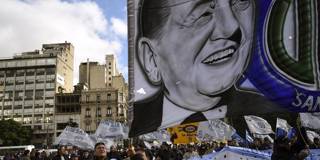
The Roots of Argentina’s Surprise Crisis
A change in macroeconomic policies will not be sufficient to set Argentina on a path of inclusive and sustained economic development. But, as last month's currency scare showed, abandoning the approach adopted by President Mauricio Macri's administration at the end of 2015 is a necessary step.
NEW YORK – The currency scare that Argentina suffered last month caught many by surprise. In fact, a set of risky bets that Argentina’s government undertook starting in December 2015 increased the country’s vulnerability. What was not clear was when Argentina’s economy would be put to the test. When the test came, Argentina failed.